Book of Demons is a dungeon crawling action-RPG about a solitary adventurer who enters a decrepit cathedral and discovers an unholy army pouring out of a portal from Hell. I choose to play as a burly sword-swinging Warrior, a nimble Rogue with a bow and arsenal of enchanted arrows, or a Mage wielding reality-bending spells and set out into the Cathedral’s randomly generated depths. My mission is to push back the invasion, ending with a final confrontation with the Archdemon, the ruler of Hell itself.
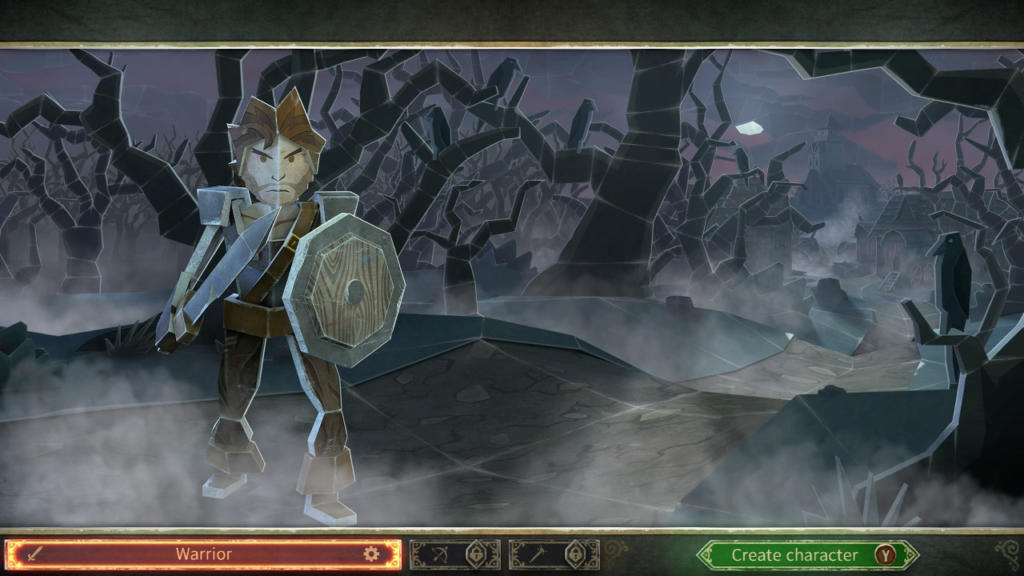
No matter which class I choose to play as, they all interact with the dungeon in the same ways. The player character moves back and forth along a single lane running along the dungeon floor. This lane may twist and turn or branch off in multiple directions, but I will never have more choices than to move along it in two directions. Monsters are free to move wherever they want, and if they are blocking the lane then they will have to be bypassed with a special ability or killed if I want the player character to continue moving.
Despite these limitations, getting close enough to attack monsters is rarely a problem. The player character can perform a basic attack against any monster in a wide radius around them. Even the Warrior’s sword will somehow reach across the room to strike his enemies. When killed, monsters drop gold and other useful items. They do not, however, drop equipment. There is no equipment in Book of Demons. Instead, the gear the player character wears and the skills they use are determined by the cards they carry in their hand.
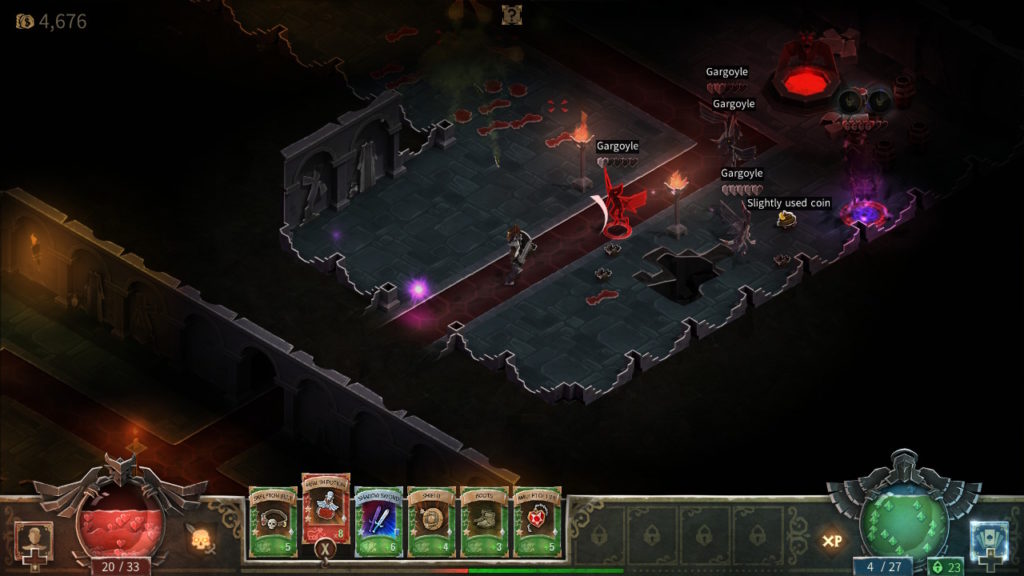
Each class utilizes a unique deck of cards they slowly build while exploring the dungeon. Adding these cards to their hand lets them use unique skills or gain useful passive effects. There is a small pool of basic cards that all three classes share, including Health and Mana Potions as well as magic rings which add elemental effects to basic attacks. It’s the class-exclusive cards which makes each player character unique.
The Warrior gets a few Spell cards, like Mighty Blow, which stuns a single target, and Throw, which knocks back monsters in a cone in front of him. Most of his cards are Artifacts, which lock out a portion of his mana as long as they are in his hand but also provide useful passive effects. Bloody Armor causes the Warrior to drop healing hearts when he gets hit, creating a loop of taking damage and receiving healing. Shadow Sword makes his basic attack strike multiple nearby enemies. He’s the sturdy, but boring class, wading through Hell’s armies with reliable sword swings enhanced by his many equipped Artifacts.
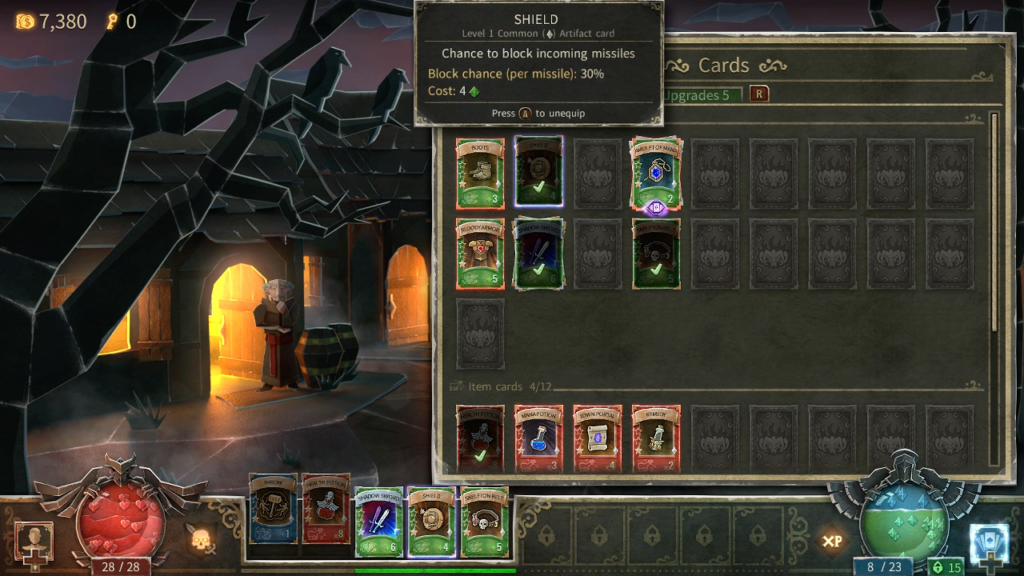
The Mage is the Warrior’s counterpoint, getting comparatively few Artifact cards as he needs his mana reserves to unleash his many spells. Book of Demons has a peculiar spellcasting system where using a Fireball or Ice Bolt Spell card will consume a portion of the Mage’s mana then bank charges of that spell I may use as needed at no additional cost. Thanks to this banking system, equipping a cheap mana regeneration Artifact effectively gives the Mage infinite spellcasting potential.
The Mage’s offensive magic is at least twice as powerful as basic attacks, which are the Warrior and Rogues’ bread and butter, and continues to ascend in power as he adds more cards to his deck. He is by far the most destructively powerful of the three classes, to the point that his comparative physical vulnerability from a lack of defensive Artifacts hardly matters.
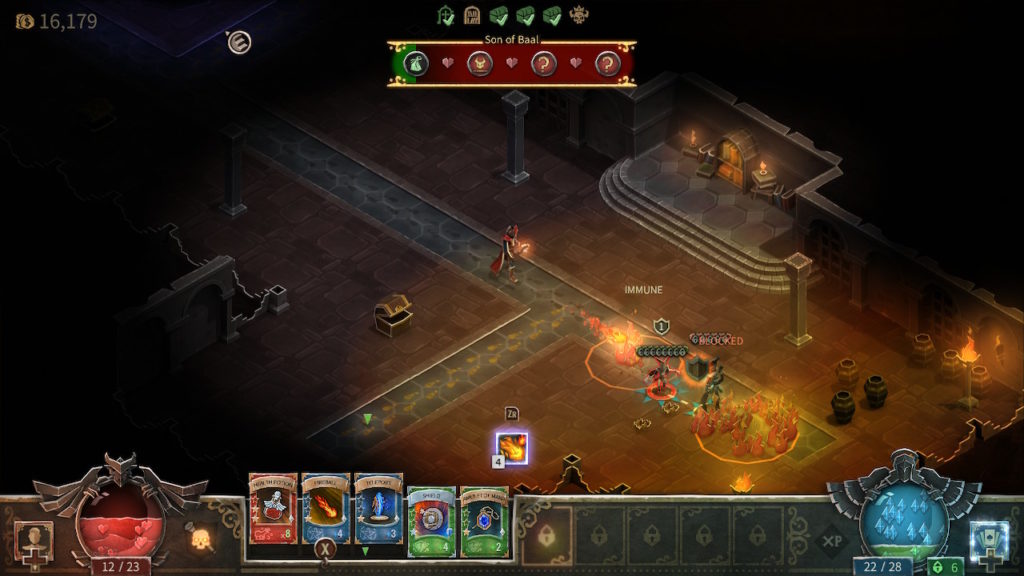
Between the Warrior and the Mage is the Rogue. She builds the most balanced deck of cards, with Artifacts that enhance her defenses and basic attacks, Spell cards that give her mobility and crowd control skills, and special Quiver Item cards. Once a Quiver card is equipped to her hand, then Quiver resources will randomly drop from monsters. When picked up, these add a charge to the Quiver card, which can then be used to add to a pool of special arrows the Rogue can fire similarly to the Mage’s attacking spells.
Not only is the Rogue’s Quiver card system unnecessarily complicated, it also puts her at a significant disadvantage to the other player characters. The Warrior doesn’t have to deal with keeping attack charges banked to be effective. The Mage’s spells are powerful and can be recharged indefinitely using his mana reserves. The Rogue’s arrows are not only much weaker than the Mage’s infinitely regenerating spells, she only gets more Quivers when they are randomly dropped by enemies or expensively purchased in town. In either case, keeping her equipped is a tedious exercise. Despite her mobility giving her great survivability, I feel it is a poor tradeoff for how difficult it is to exploit enemy weaknesses with her limited arrow supply.
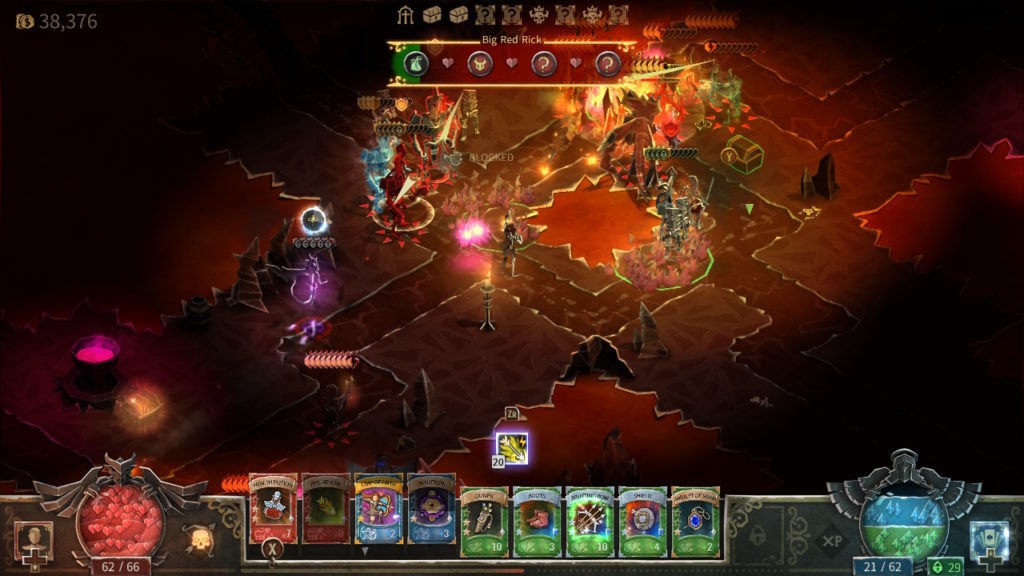
Like the cards which determine a class’ skills and equipment, building up the player character’s statistics is mechanically unusual. It’s a streamlined RPG leveling system where all I need to concern myself with are health and mana pools and the player character’s experience level.
At every experience level, I choose to increase the player character’s maximum health or mana pool by a single point. The option is do not choose is transported back to town, where I may pay a fee to add it to the player character’s pool. In practice, this means every level up I choose to expand the vital health pool since I know those missed mana points are a mere visit to town away. Dying causes these unclaimed charges to disappear, but this only further incentivizes taking the extra health point so the player character can stay alive that much longer to claim the potential mana point.
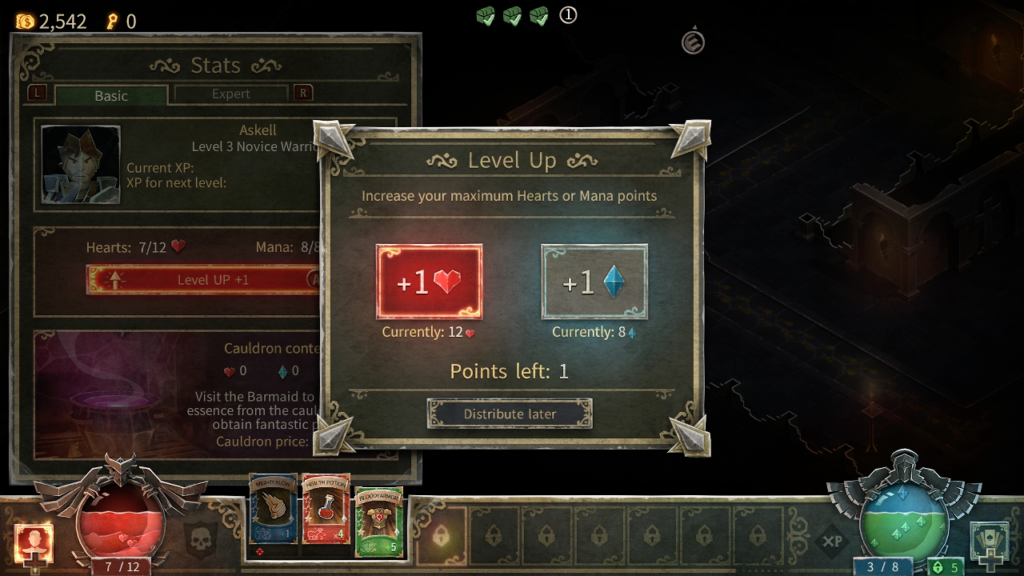
Success in many action-RPGs can be overly reliant on optimal stat builds that require thorough knowledge of arcane minutiae in how weapons function and skills interact. This is not the case with Book of Demons, which has admirably simplified damage mechanics.
Every time the player character hits a monster with a basic attack, it deals exactly one point of damage to their hit point total. This never changes no matter how high a level they reach. Instead, every time the player character gains a level, every monster in the dungeon has their maximum hit points reduced by one. Tough monsters with deep hit point pools soon become easier to dispatch as the player character ascends through the experience levels, creating a sense of momentum and growing power without actually changing anything about the player character’s function.
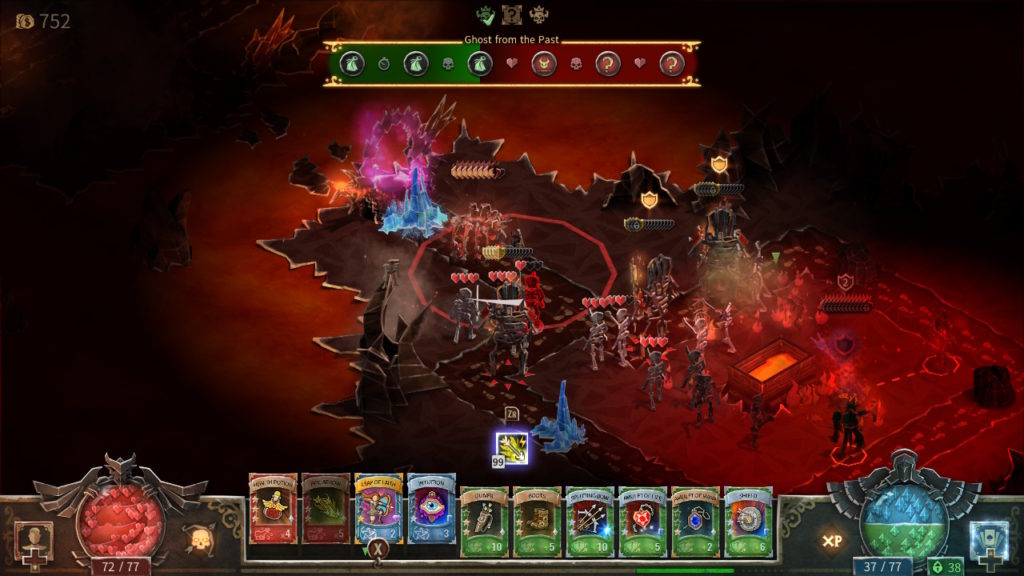
Taking advantage of this growing power is usually a straightforward manner of targeting what I want to die, then holding down an attack or skill button until it does. This works best on PC, where I can point my cursor at a troublesome monster and track it as it weaves through obstacles and other demons.
Targeting specific monsters is considerably more difficult to perform on consoles using a gamepad, which is how I choose to play Book of Demons. I move the player character with the left joystick and they will automatically target the nearest monster when they enter range. The problem with this system is every time a monster moves out of range, whether by running away to safety or because I have moved the player character away for their safety, the target shifts automatically. By the time I reach the dungeon’s bottommost levels where dense monster packs crowd every corner and hallway, consistently targeting a specific monster becomes nearly impossible.
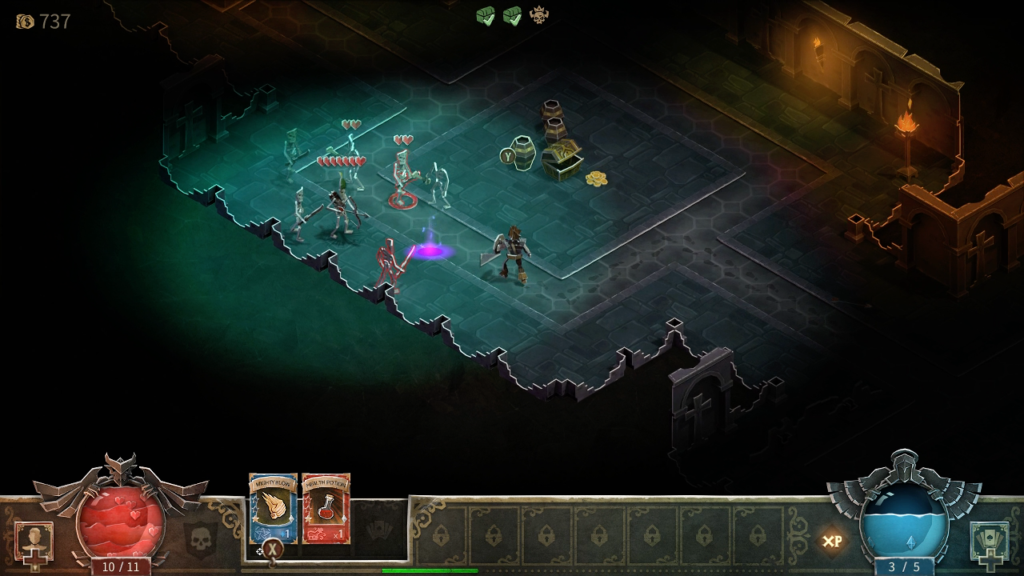
There is a cursor I can move with the right stick to highlight a desired target, but it is squirrely and always warps back to the player character’s position once I target something. Once that monster leaves my range, however briefly, I have to whip out the cursor to target it again. Sometimes the targeting cursor is helpful, but strategically killing certain monsters in large groups is a dream that’s only possible with mouse controls.
With much turmoil and teeth-gritting, I eventually muddle through all the dungeon’s floors and defeat the Archdemon at its bottom with all three classes using console controls. It’s not an especially difficult feat, though it is far more aggravating than it would be on a PC.
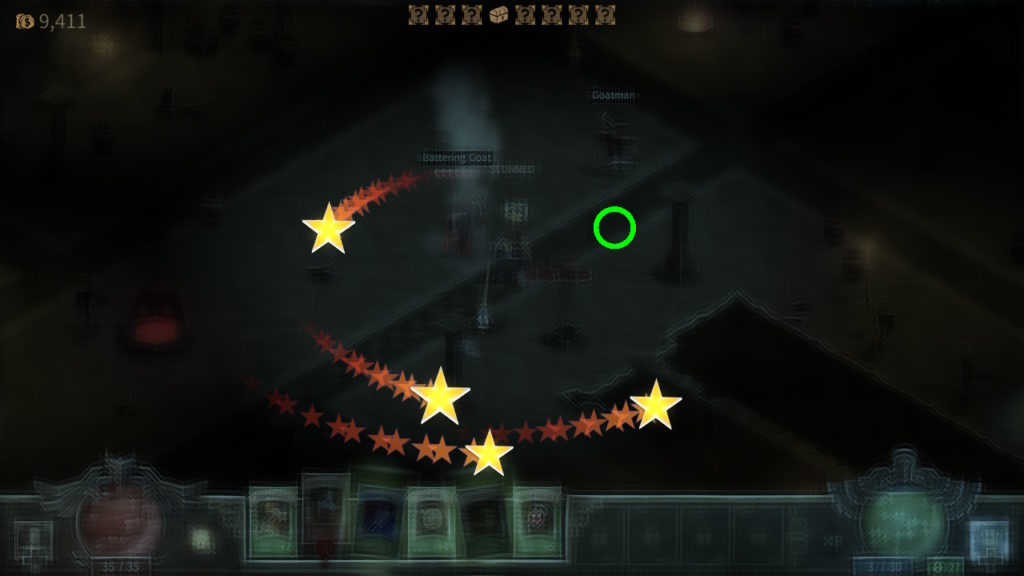
The ability to target certain monsters is vital since many of them have unique abilities which can make the player character’s life more difficult. Some have armored shells around their hearts which must be shattered before they will take damage. Others can teleport dozens of demons on the player character’s head, though I can interrupt the spell if I can target them before it finishes casting. Monsters with the power to stun represent Book of Demons at its most creative, filling the screen with stars which I must swat away with the cursor before I regain control of the player character.
The dungeon has a fixed number of floors, but I am provided remarkable flexibility in how I choose to progress through it. Using a device called a Flexiscope, I can select how long a session I want to play for—from as few as ten minutes to as long as an hour-plus—and a set number of floors will automatically generate which will take about that time to finish. The more I play, the better the Flexiscope learns my playstyle and the more accurate its playtime prediction will be. I like this system since it gives me the ability to fit in a quick session before important commitments and appointments that other procedurally generated videogames do not.
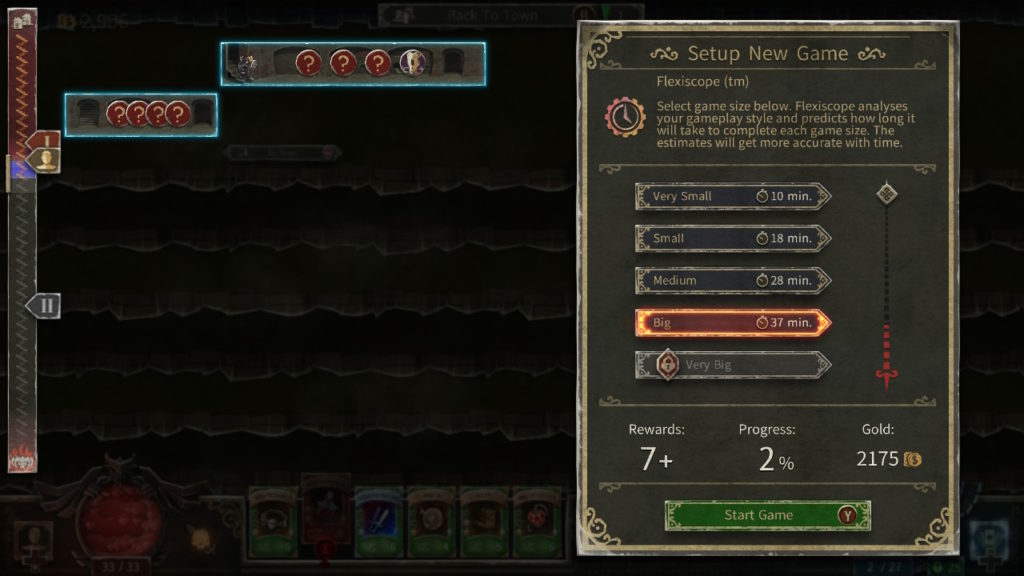
Even after I have defeated the Archdemon, Book of Demons is far from over. I can continue to use the Flexiscope to create more randomly generated dungeon floors which offer more monsters, more loot, more experience levels, and new unlockable difficulty levels. It’s not quite bottomless—I will eventually hit the level cap, find the most powerful variants of every Card, and reach the highest difficulty level—but there’s an invigorating amount of things still to do after the credits have rolled.
Normally in a dungeon crawling RPG about fantasy heroes fighting demons from Hell, one might imagine a heavily gothic art design with flickering torches lighting hallways, the demons lurking unseen in the shadows only to leap out in surprise, leaving behind a bloody corpse on the floor when the hero dispatches them.
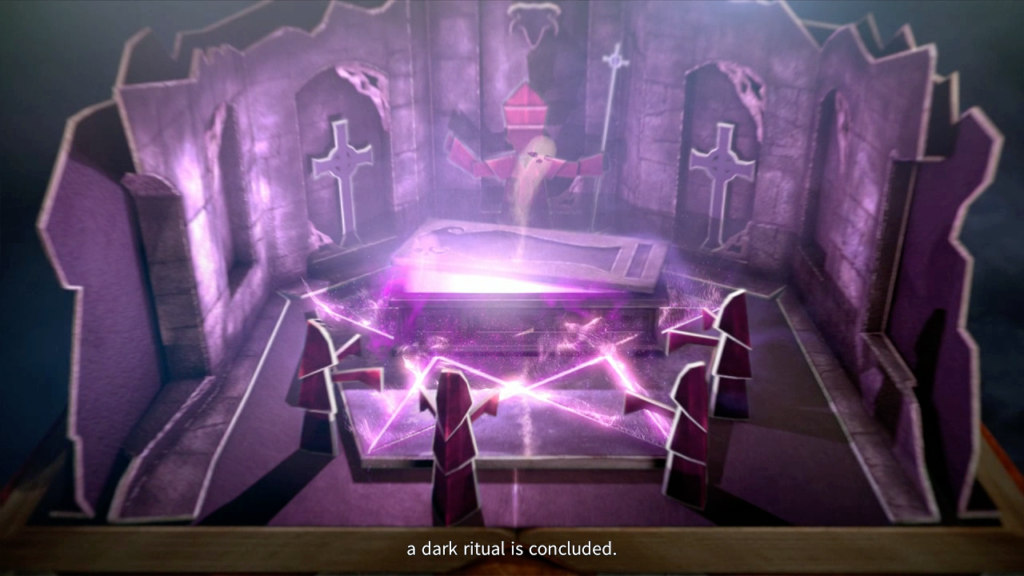
Book of Demons chooses another style entirely for its visuals. In keeping with the title theme, the world is presented as a pop-up book within the Book of Demons itself, with the characters represented by folded papercraft figures with charmingly limited animations. Their arms and legs remain static, so their “steps” through the dungeons are tiny hops and they bounce in place in lieu of using their weapons.
The papercraft aesthetic helps to create a light-hearted tone that pairs well with the feelings its narrative and design evokes. If what I have described sounds remarkably like Blizzard’s 1996 dungeon crawling action-RPG Diablo, that is no accident. Book of Demons makes little effort to hide its inspiration. But rather than being a derivative copy or a legally distinct remake, it is a parody of that seminal videogame.
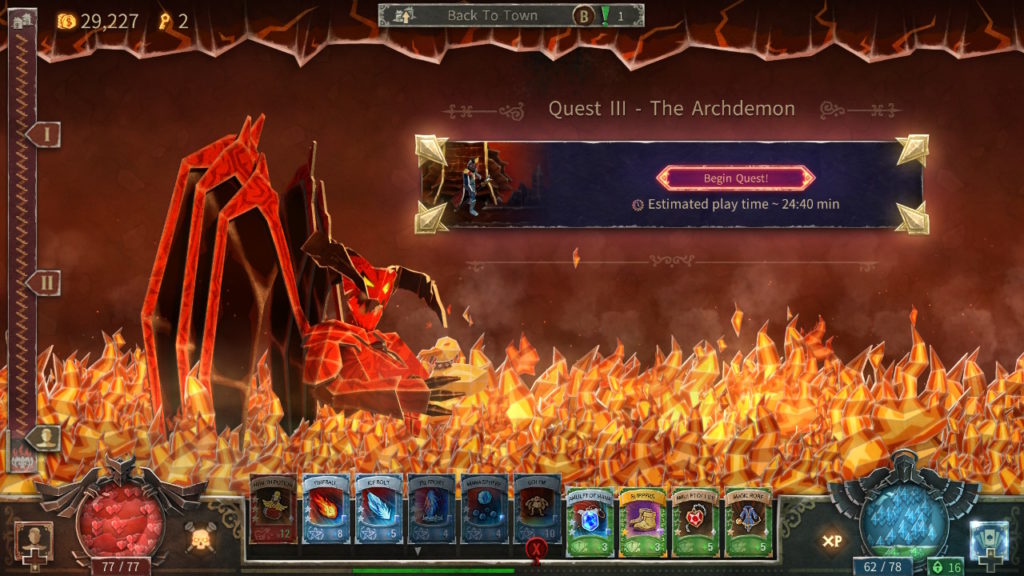
All the most iconic elements of Diablo exist here. The guardian of the dungeon’s first section, the Cathedral, is a demonic chef wielding a huge cleaver. But instead of the iconic bloodthirsty Butcher looking to sample the player character’s flesh, I face The Cook, a vegetarian chef obsessed with Carrots. Later on I face the Antipope, who whines like a spoiled child when I finally dispatch him at the entrance to Hell. If I scroll to the bottom of the Flexiscope, I can see the Archdemon literally bathing in flames, waiting for me to arrive while clutching his rubber duck.
The comedic tone and pop-up book visuals are most unexpected for Book of Demons’ subject matter and I enjoy being confronted with something this bathetic in a familiar videogame genre.
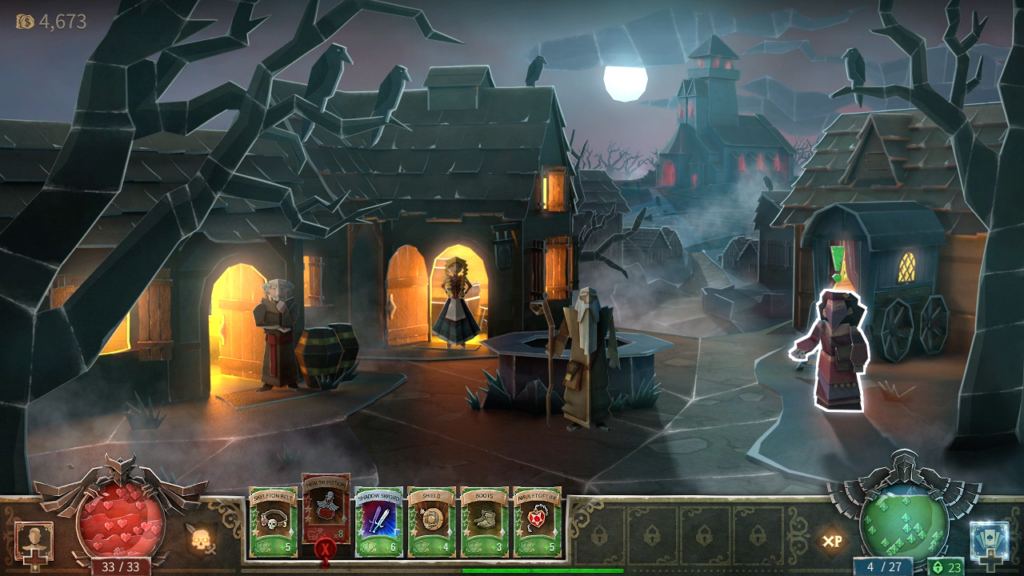
Book of Demons expertly combines simplified RPG mechanics that almost anyone can understand with breezy and streamlined action. I predict longtime Diablo fans will get the most out of its more parodic tendencies, but the elements it borrows from that series hold up well here on their own. My biggest struggle is trying to play it on a console, whose hyperactive and temperamental auto-targeting system can make killing especially dangerous or troublesome monsters an obnoxiously difficult task. Dungeon crawling fans looking for a more light-hearted take on Diablo’s trademark gothic hell-raiding will get a lot of entertainment from this irreverent indie gem.